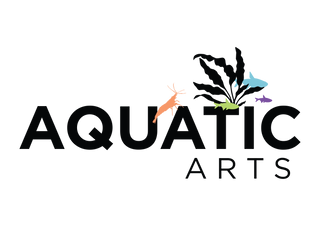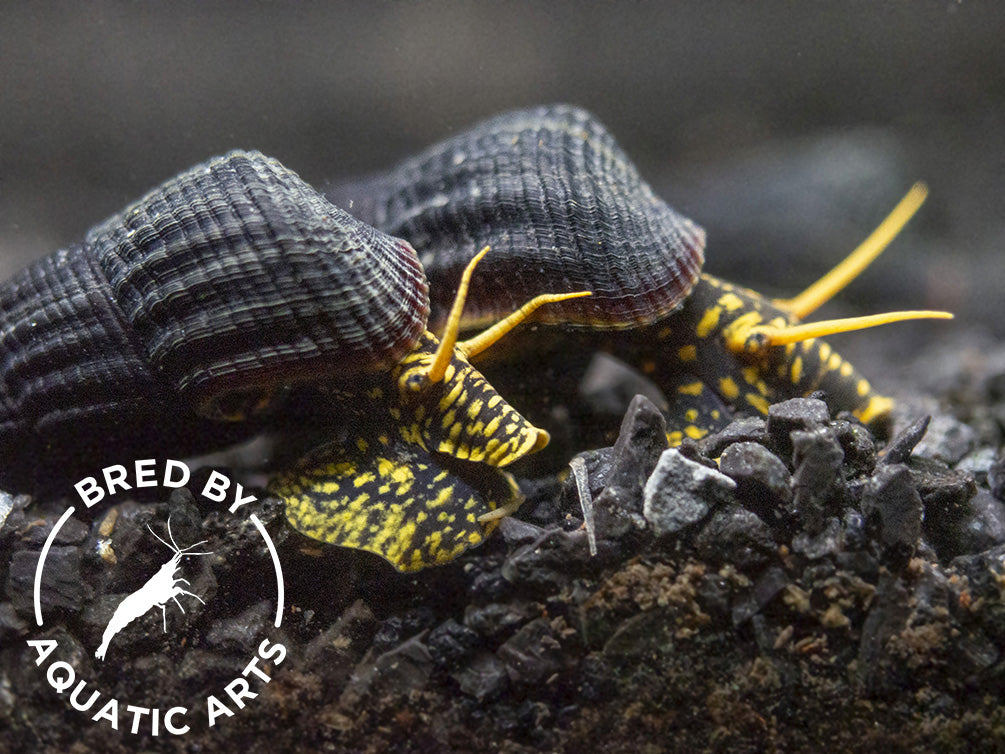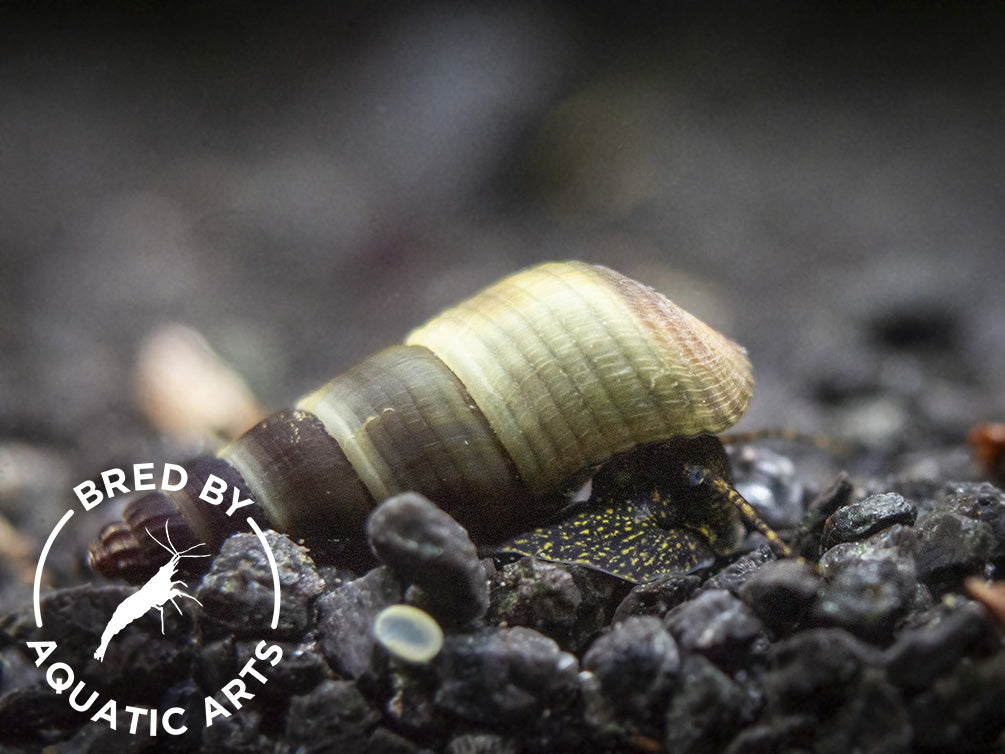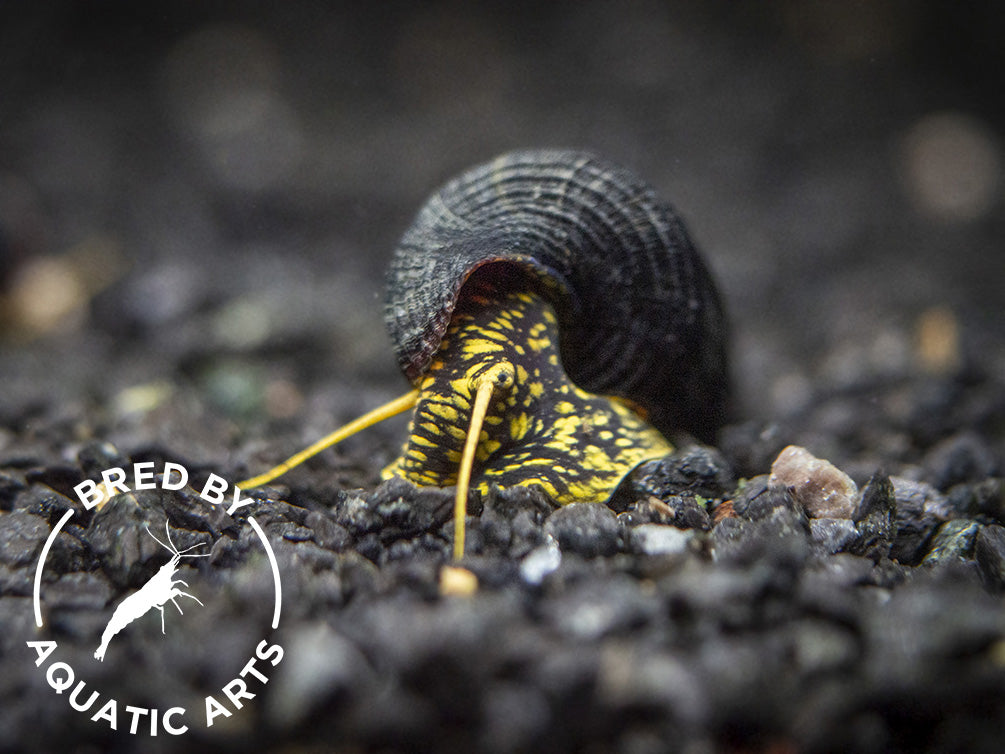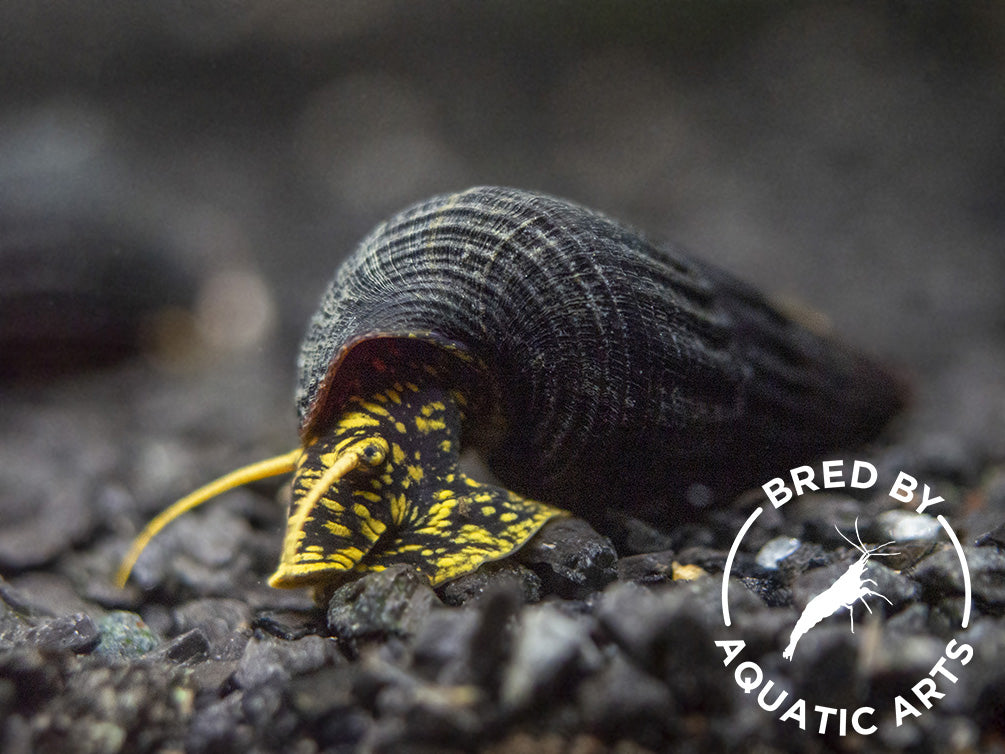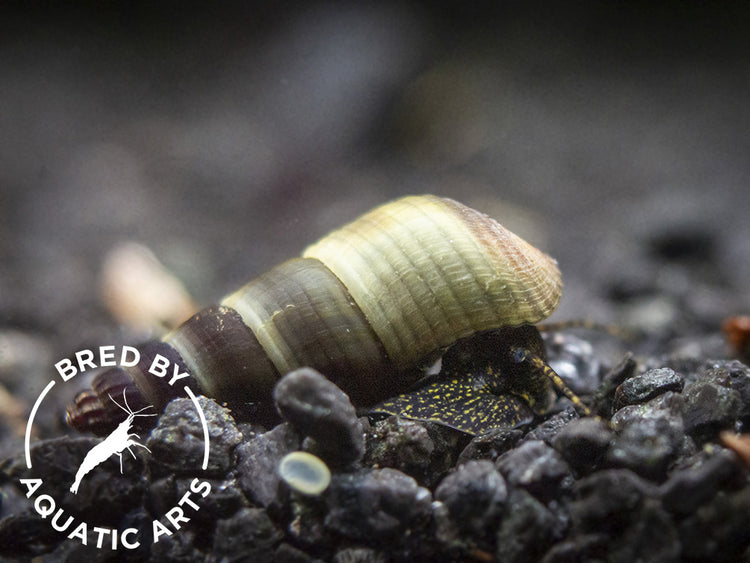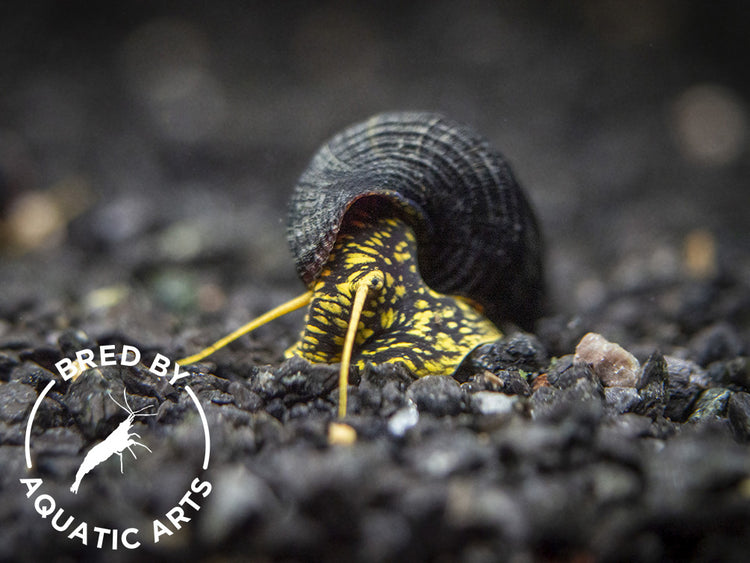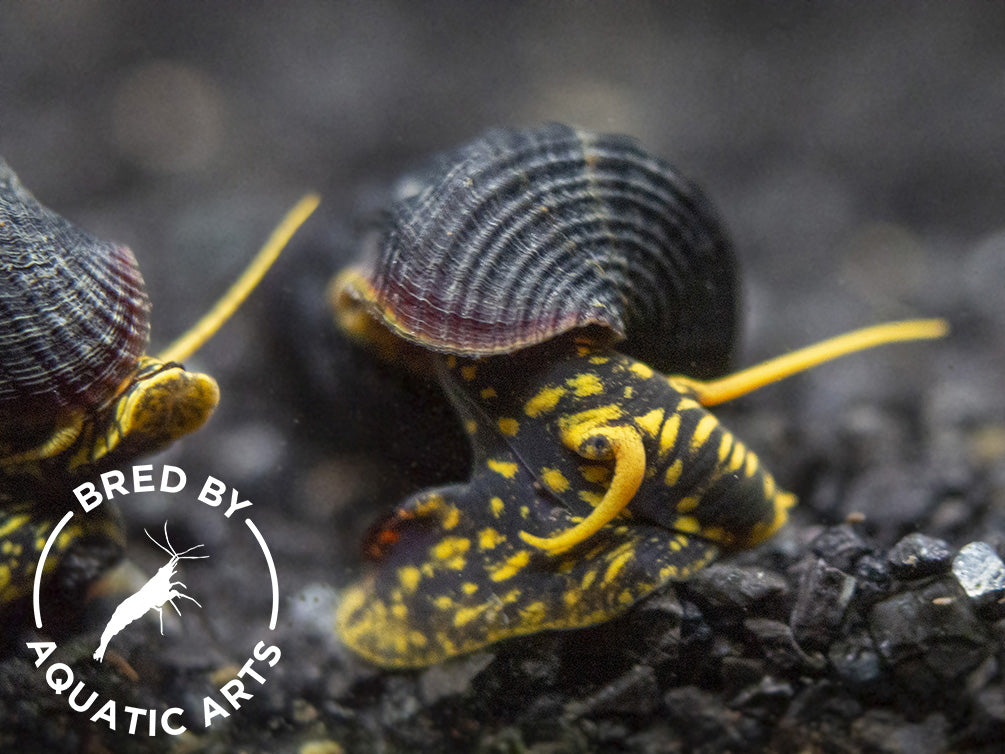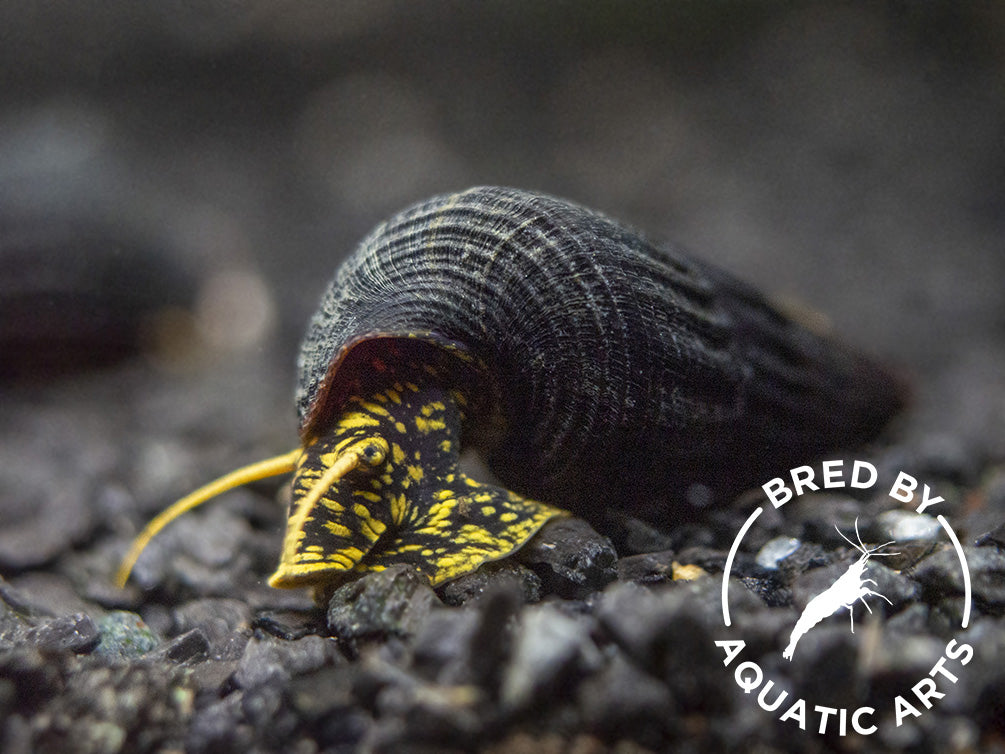Yellow Spotted Giant Sulawesi Rabbit Snail (Tylomelania patriarchalis), BREDBY: AQUATIC ARTS
- In stock, ready to ship
- Backordered, shipping soon
We are extremely proud to offer our very own Aquatic Arts Bred line of the endangered Yellow Giant Spotted Sulawesi Rabbit Snail!
- Attractive spotted pattern on the bodies with long, spiraled shells
- Interesting movement and curious nature
- Completely peaceful
- Grow to a large and impressive size
- Captive-Bred
- Temperature: 76° - 84° F (24.4° - 29° C)
- pH: 7.5 - 8.5
- KH: 2 - 15 dKH
- Minimum tank size: 10 gallons per snail
- Diet: They eat algae and decaying plant matter, and they have also been known to munch on more delicate plants. They can mostly subsist on leftover fish/invertebrate flakes or pellets, but their diets should be occasionally supplemented with algae wafers and/or blanched vegetables such as zucchini, kale, spinach, or cucumber.
- Warning! Avoid any food product, medication, or plant fertilizer that contains Copper of any form. Copper is toxic to invertebrates. Many commercial fish foods, medications, and plant fertilizers contain copper or more commonly copper sulfate. Always look at the ingredient list for any product going into the aquarium to ensure they are copper free.
- Social behavior: Peaceful and solitary; will not engage with tankmates.
- Origin: Tank-Bred, but indigenous to Sulawesi region of Indonesia
- Average adult size: 4 inches (10.2 cm)
- Average purchase size: 0.25 - 1 inch (.64 - 2.5 cm)
For the safety of our animals, we only ship live fish, crabs, and select other inverts exclusively via UPS 1 Day Air. If your order contains this item, you will only see UPS 1 Day Air as a shipping option during checkout. If other items are in your cart that can ship with 2 day or standard shipping options the only shipping method you can still select is UPS 1 Day Air.
UPS 1 Day is a description of the duration of time a shipment will spend in transit once it has been shipped. This does not guarantee the package will be shipped the same or next day from which the order was placed.
Shipping Schedule for this service
Current Handling Time:
1-9 business days
Here at Aquatic Arts, we consider the welfare of the live animals we are shipping to be of the foremost importance. This process is much more involved than simply creating a shipping label and affixing it to a box. Depending on the order, it takes from 4 to 7 people to complete this process properly. We check the weather conditions here where they fly out of the Indianapolis UPS facility and the destination for each shipment. We start early each morning and go through a multi-step process to have the day's shipments prepared in time for the UPS pickup. The volume of orders in our system also affects the processing time. Therefore our stated handling time is 1-9 business days.
Shipping Rate
Pricing is by size of package needed to fill entire order and distance it must travel. It will be calculated at checkout.
